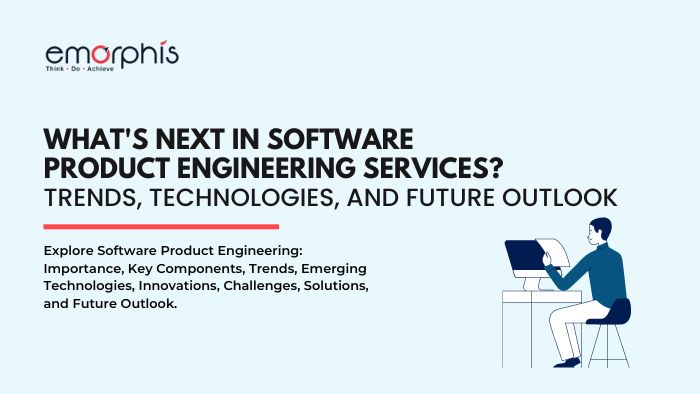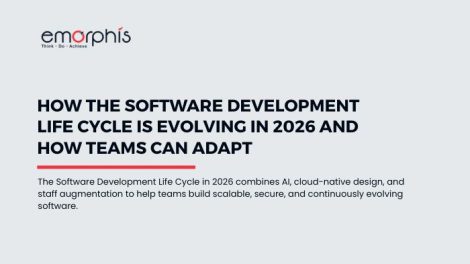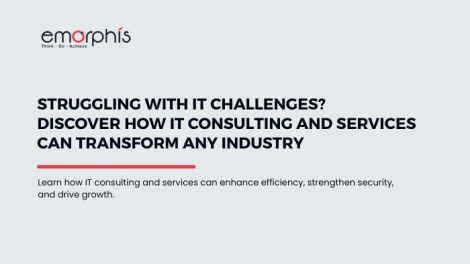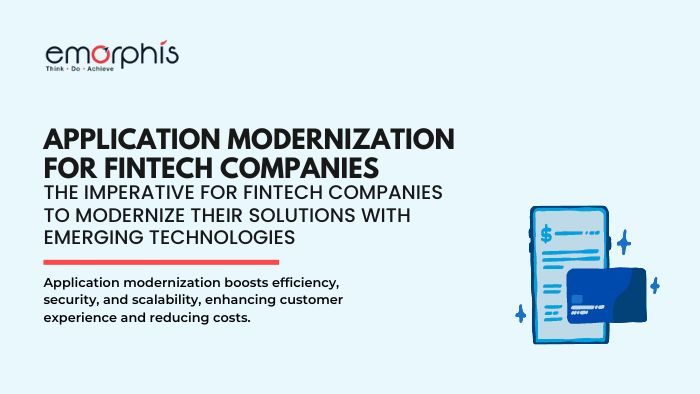Overview of Software Product Engineering Services
Software product engineering services are a critical component of modern businesses. Moreover, encompasses the end-to-end process of developing and maintaining software products. Starting with conceptualization and ideation, these services, in fact, involve collaborating with stakeholders to define project goals and scope.
The product design and architecture phase ensure scalability and user-centric design, while the development and implementation phase brings the concept to life using agile methodologies.
Furthermore, quality assurance and testing are paramount to ensure the reliability and security of the product. Also, Post-deployment, ongoing maintenance, and support services ensure the software’s longevity, adapting to evolving requirements.
In a dynamic technological landscape, robust software product engineering services are pivotal in creating innovative, reliable, and user-friendly solutions that also meet the ever-changing demands of businesses and end-users.
The anticipated growth in the software market, as projected by Statista, is indeed noteworthy, with the expected revenue soaring to US$698.80 billion by 2024. Furthermore, within this expansive market landscape, the dominance of Enterprise Software is highlighted in Statista’s projections, indicating a substantial market volume of US$292.00 billion in 2024. Moreover, the sector’s upward trajectory is supported by an estimated annual growth rate (CAGR 2024-2028) of 5.27%, as outlined in the Statista report.
In fact, this robust growth trajectory is set to propel the software market to an impressive market volume of US$858.10 billion by the year 2028. Additionally, according to Statista’s global comparison, the United States is expected to emerge as a frontrunner, contributing significantly to the market with an estimated revenue of US$353.50 billion in 2024.
This data from Statista underscores the industry’s dynamic growth and the pivotal role of the United States in the global software market landscape.
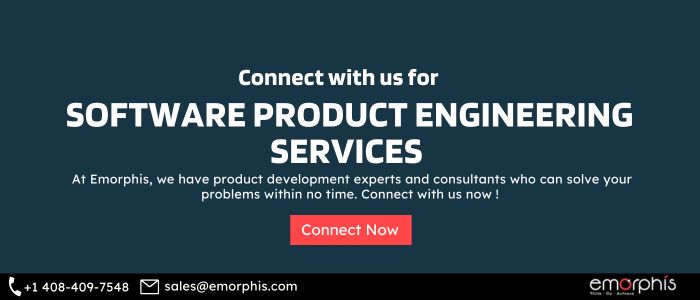
Importance in the Modern Business Landscape
In the contemporary business landscape, Software Product Engineering Services are crucial. Moreover, they play a pivotal role in driving innovation, ensuring competitiveness, and meeting evolving business needs in a rapidly changing technological environment.
First and foremost, Software Product Engineering Services provide a structured and comprehensive approach to software development, from ideation to deployment. This process involves a thorough understanding of client requirements, market trends, and user expectations, enabling the creation of software products that are not only functional but also aligned with business goals.
The iterative and agile development methodologies also employed by these services facilitate quick adaptation to changing requirements. In fact, this ensures that software products remain relevant and up-to-date. This adaptability, in fact, is crucial in an era where technology advancements and market dynamics are unpredictable.
Quality assurance and testing, integral components of Software Product Engineering Services, contribute significantly to the reliability and security of software products. Rigorous testing processes identify and rectify issues before deployment, enhancing the overall quality and performance of the software.
Furthermore, these services contribute to cost-effectiveness and efficiency by streamlining the development process. The emphasis on scalability and also, maintainability in the design and architecture phase ensures that software products can grow with the business and accommodate future enhancements seamlessly.
In an era where digital transformation is a strategic imperative, Software Product Engineering Services empower businesses to stay ahead of the competition. Moreover, they enable the creation of user-friendly, innovative, and technologically advanced products. In fact, these products not only meet current demands but also position companies to thrive in the future. Ultimately, the importance of Software Product Engineering Services also lies in their ability to transform ideas into robust, market-ready software solutions. Moreover, this ability drives business success in the modern, technology-driven landscape.
Key Components of Software Product Engineering Services
Software Product Engineering Services encompass a range of key components, that collectively contribute to the successful development, enhancement, and also, maintenance of software products.
Moreover, these components are crucial for ensuring a structured and comprehensive approach throughout the software development lifecycle:
1. Conceptualization and Ideation
- Understanding client requirements and also defining project goals.
- Collaborating with stakeholders to formulate a clear vision for the software product.
2. Product Design and Architecture
- Creating a blueprint for the software encompassing system architecture, also, UI/UX design, and scalability considerations.
- Ensuring that the design is user-centric and aligns with the overall business strategy.
3. Development and Implementation
- Translating the design into a functional software product using appropriate programming languages and in fact frameworks.
- Employing agile development methodologies for iterative and also flexible development processes.
4. Quality Assurance and Testing
- Conducting rigorous testing, including functional, performance, and also security testing, to identify and rectify issues.
- Ensuring the reliability, performance, and security of the software product before deployment.
5. Deployment and Release
- Planning and moreover, executing deployment strategies to minimize downtime and disruptions.
- Implementing continuous integration and also deployment practices for a streamlined release process.
6. Maintenance and Support
- Providing ongoing support for troubleshooting, issue resolution, and moreover for updates.
- Adapting the software to changing environments and also addressing evolving business requirements.
7. Scalability and Flexibility
- Designing the software with scalability in mind to accommodate growth and increased user loads.
- Ensuring flexibility to easily integrate new features and technologies in the future.
8. User Experience (UX) Optimization
- Focusing on creating a positive and intuitive user experience to enhance user satisfaction.
- Iteratively refining the user interface based on user feedback and industry best practices.
9. Project Management and Collaboration
- Implementing effective project management methodologies to ensure timely and efficient development.
- Facilitating collaboration among cross-functional teams, including developers, designers, and stakeholders.
10. Documentation and Knowledge Transfer
- Creating comprehensive documentation for the software product, aiding in future maintenance and enhancements.
- Facilitating knowledge transfer to ensure that the development team and stakeholders understand the software.
These key components collectively contribute to the success of Software Product Engineering Services, enabling the creation of robust, high-quality software products that meet the dynamic needs of businesses and end-users.
Find the details of How customized software development companies help product excellence?
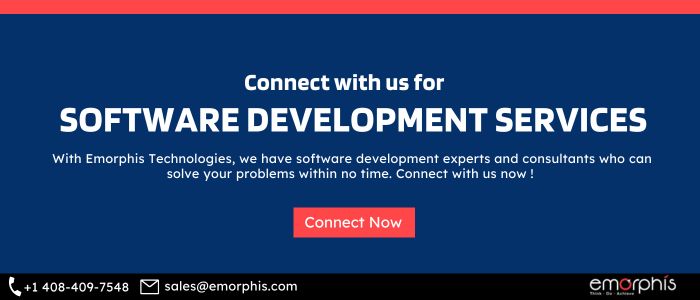
Trends Shaping Software Product Engineering Services
In the dynamic landscape of Software Product Engineering Services, several trends are shaping the way these services are delivered and perceived. Understanding these trends is crucial for staying at the forefront of innovation and ensuring the successful development of cutting-edge software products.
Trend 1. Agile and DevOps Integration
The trend of Agile and DevOps integration in Software Product Engineering Services also underscores the importance of streamlined, collaborative development processes. Agile methodologies enhance adaptability, moreover, allowing teams within Software Product Engineering Services to respond promptly to evolving client requirements. Concurrently, DevOps consulting services and practices ensure seamless collaboration between development and operations, facilitating continuous integration, delivery, and deployment. This integration significantly enhances the efficiency and effectiveness of Software Product Engineering Services, aligning them with the dynamic nature of the software development landscape.
Trend 2. AI and Machine Learning Integration
The integration of Artificial Intelligence (AI) and Machine Learning (ML) in Software Product Engineering Services is pivotal for creating intelligent and also, data-driven solutions. Moreover, these technologies empower software products to analyze vast datasets, providing actionable insights and predictive capabilities. AI and ML integration within Software Product Engineering Services enhances automation, also, enabling the development of smart applications that continuously learn and adapt to user behavior. This transformative trend also positions Software Product Engineering Services at the forefront of innovation, delivering sophisticated and forward-thinking solutions to meet the demands of today’s digital landscape.
Click to check the details of AI in Software Development, unlocking endless possibilities.
Trend 3. Focus on Cybersecurity
The increasing emphasis on cybersecurity in Software Product Engineering Services reflects the industry’s commitment to ensuring the integrity and moreover, security of software products. Cybersecurity measures are integrated throughout the development lifecycle, also encompassing threat assessments, code reviews, and penetration testing. This proactive approach enhances the resilience of software products, also safeguarding against potential cyber threats. Moreover, by prioritizing cybersecurity, Software Product Engineering Services ensures that the products they deliver meet stringent security standards, fostering trust and confidence among users and stakeholders.
Find more details of Cybersecurity Consulting Services
Trend 4. Cloud-Native Development
Cloud-native development is a transformative trend in Software Product Engineering Services, also leveraging cloud infrastructure to optimize scalability, flexibility, and cost-effectiveness. This approach allows software products to seamlessly adapt to varying workloads and moreover, user demands, ensuring optimal performance and resource utilization. By embracing cloud-native development, Software Product Engineering Services enhance the agility of their solutions, also enabling rapid deployment and updates. This trend positions these services as key facilitators of innovation, also aligning software products with the scalable and dynamic nature of cloud environments.
Trend 5. User-Centric Design and Experience
User-centric design and experience remain fundamental in Software Product Engineering Services, with a continued focus on creating software products that not only meet functional requirements but also delight users. These services prioritize intuitive interfaces, personalized experiences, and also responsive designs to enhance user satisfaction. Moreover, by integrating user feedback throughout the development process, Software Product Engineering Services ensures that the end product aligns closely with user expectations. In fact, this commitment to user-centricity positions these services as champions of creating software products that resonate positively with their target audiences.
Trend 6. IoT Integration
The integration of the Internet of Things (IoT) is reshaping the landscape of Software Product Engineering Services. These services are at the forefront of developing software products that leverage interconnected devices, enabling seamless communication and also, data exchange. Moreover, IoT integration enhances the functionality of software products, creating intelligent and responsive solutions that cater to diverse industry needs. By embracing IoT, Software Product Engineering Services position themselves as pioneers in delivering innovative and also interconnected software products that drive efficiency and enhance user experiences.
Trend 7. Blockchain Adoption
Blockchain adoption is gaining momentum within Software Product Engineering Services, particularly in industries such as finance, healthcare, and supply chain. The integration of blockchain technology enhances the security, transparency, and also, traceability of transactions within software products. By incorporating blockchain, Software Product Engineering Services also contribute to the development of secure and tamper-proof applications, aligning with the increasing demand for trust and accountability in digital transactions. This trend positions these services as frontrunners moreover, in providing cutting-edge solutions that address evolving industry requirements.
Trend 8. Automation and Low-Code/No-Code Platforms
Automation is revolutionizing the development landscape, and Software Product Engineering Services are leveraging this trend to streamline processes and accelerate time-to-market. The rise of Low-Code/No-Code platforms within these services enables faster prototyping and development, reducing the reliance on traditional coding. This approach enhances efficiency, allowing for rapid iteration and adaptation to changing requirements. By embracing automation and Low-Code/No-Code platforms, Software Product Engineering Services position themselves as innovators, delivering solutions that optimize development workflows and increase overall productivity.
Trend 9. Cross-Platform Development
The trend of cross-platform development within Software Product Engineering Services addresses the growing demand for software products across various platforms and devices. Moreover, by utilizing frameworks and technologies like React native app development that supports cross-platform compatibility, these services enable the creation of applications that seamlessly run on multiple operating systems. This approach enhances the reach and accessibility of software products, ensuring a consistent user experience across diverse devices. In fact, embracing cross-platform development positions Software Product Engineering Services as facilitators of broad-market product accessibility and user engagement.
Trend 10. Data Privacy and Compliance
With an increasing focus on data privacy, Software Product Engineering Services are incorporating robust measures to ensure compliance with data protection laws and regulations. Moreover, these services implement encryption, access controls, and other security measures to safeguard sensitive user data. In fact, by prioritizing data privacy and compliance, Software Product Engineering Services demonstrates a commitment to building trust with users and adhering to legal standards. This trend positions these services as champions of responsible and ethical software development, catering to the evolving expectations of both users and regulatory authorities.
Emerging Technologies in Product Engineering
The landscape of product engineering is continually evolving with the advent of emerging technologies. Moreover, that drives innovation and reshapes how products are designed, developed, and maintained.
a. Artificial Intelligence (AI) and Machine Learning (ML)
AI and ML are transformative technologies that are also revolutionizing product engineering. From predictive analytics for product performance optimization also, to intelligent automation for manufacturing processes, AI and ML play a crucial role in enhancing efficiency and decision-making. They enable products to learn and adapt, providing valuable insights and automation capabilities that were once unimaginable.
b. Internet of Things (IoT)
IoT is reshaping product engineering by enabling the connectivity of devices and systems. Moreover, products embedded with IoT sensors can collect and exchange data, fostering real-time monitoring, control, and communication. This connectivity enhances product functionality, facilitates remote diagnostics, and opens up opportunities for innovative business models, such as product-as-a-service.
c. Blockchain Technology
Blockchain is increasingly finding applications in product engineering, particularly in industries where trust, transparency, and traceability are critical. In supply chain management, for instance, blockchain ensures a tamper-proof and decentralized ledger, reducing fraud and errors. It is also utilized for secure and transparent transactions in financial products and decentralized applications.
d. Augmented Reality (AR) and Virtual Reality (VR)
AR and VR technologies are transforming the product engineering landscape by enhancing the design, prototyping, and testing phases. Engineers can visualize and interact with virtual prototypes, simulate real-world scenarios, and identify potential issues before physical production. AR is also used for maintenance and training, providing augmented information overlays for field technicians.
e. Edge Computing
Edge computing is gaining prominence in product engineering, particularly for applications requiring real-time processing and low-latency responses. By processing data closer to the source, edge computing reduces latency and bandwidth usage, making it ideal for applications in IoT devices, autonomous systems, and other latency-sensitive scenarios.
f. 5G Technology
The rollout of 5G networks is significantly impacting product engineering by enabling faster and more reliable communication. Products can also leverage high-speed, low-latency connectivity to enhance features like real-time data streaming, remote control, and seamless integration with cloud services. This is particularly crucial for applications in smart cities, autonomous vehicles, and industrial automation.
g. Robotics and Automation
Robotics and automation technologies are advancing product engineering in fact, by enhancing manufacturing processes and product functionalities. Also, Collaborative robots (cobots) are increasingly integrated into production lines, working alongside human workers. Moreover, Robotic process automation (RPA) is automating repetitive tasks in various industries, improving efficiency and reducing errors.
h. Biotechnology and Bioengineering
In the realm of healthcare and life sciences, biotechnology and bioengineering are transforming product development. Advances such as personalized medicine, 3D bioprinting, and genetic engineering are influencing the creation of medical devices, pharmaceuticals, and other healthcare products, ushering in a new era of precision and customization.
i. Quantum Computing
Although still in the early stages of development, quantum computing holds significant promise for complex problem-solving in product engineering. Its potential to handle intricate simulations, optimization problems, and advanced data analysis could revolutionize materials science, logistics, and other fields with computationally intensive tasks.
j. Cybersecurity Solutions
As products become increasingly connected and dependent on digital technologies, robust cybersecurity solutions are integral to product engineering. This includes advancements in encryption, secure communication protocols, and cybersecurity frameworks to protect products from cyber threats and ensure data integrity.
The convergence of these emerging technologies is creating a synergistic effect, driving innovation and reshaping the future of product engineering across diverse industries. As these technologies mature, their integration will continue to unlock new possibilities, improve efficiency, and redefine the way products are conceived, developed, and brought to market.
Explore software solutions amid the rise of emerging technologies
Top 10 Innovation in Development Practices
Innovation in development practices is a constant and evolving process, driven by the need for efficiency, collaboration, and adaptability in the ever-changing landscape of software development.

Several key trends and practices are shaping the way development is approached, fostering a culture of continuous improvement and innovation:
Innovation 1. Agile Methodology Evolution
Agile development practices have been a cornerstone of innovation, emphasizing flexibility, collaboration, and iterative development. The evolution of Agile includes variations like Scrum, Kanban, and Lean, each tailored to specific project needs. Agile methodologies continue to adapt, incorporating feedback loops and emphasizing customer collaboration for faster, more responsive development.
Innovation 2. DevOps Integration
The integration of development and operations (DevOps) practices is a significant innovation, breaking down silos between development and IT operations. DevOps promotes continuous integration, continuous delivery (CI/CD), and automation, streamlining the software development lifecycle. This integration accelerates development cycles, enhances collaboration, and improves overall product quality.
Innovation 3. Shift-Left Testing
Shifting testing processes earlier in the development lifecycle, known as “Shift-Left Testing,” is a practice gaining traction. This approach involves incorporating testing activities earlier in the development process, ensuring that potential issues are identified and addressed during the initial stages. This not only reduces the cost of fixing defects but also enhances the overall quality of the software.
Innovation 4. Microservices Architecture
Microservices architecture is an innovative approach to building scalable and maintainable systems. Breaking down monolithic applications into smaller, independently deployable services allows for better flexibility, scalability, and ease of maintenance. This approach aligns with the principles of agility and facilitates rapid development and deployment of features.
Innovation 5. Serverless Computing
Serverless computing often denoted as Function as a Service (FaaS), is reshaping the approach to application development and deployment. In this paradigm, developers concentrate on coding functions without the need to oversee the underlying infrastructure. The outcome is a heightened pace of development, diminished operational burdens, and improved scalability.
Innovation 6. Containerization and Orchestration
Containers, exemplified by Docker, have transformed how applications are deployed by furnishing lightweight, portable, and uniform environments. Orchestration tools like Kubernetes streamline the deployment, scaling, and administration of containerized applications, ensuring efficiency, scalability, and resilience in intricate, distributed systems.
Innovation 7. Continuous Integration and Continuous Delivery (CI/CD)
CI/CD practices automate the building, testing, and deployment of code changes, enabling frequent and reliable releases. This approach reduces manual intervention, minimizes errors, and accelerates time-to-market. Adopting CI/CD fosters a culture of rapid, iterative development and delivery.
Innovation 8. Artificial Intelligence (AI) in Development
AI is increasingly integrated into development practices to automate repetitive tasks, optimize workflows, and enhance decision-making processes. AI-driven tools for code analysis, testing, and optimization contribute to increased efficiency and improved software quality.
Innovation 9. Infrastructure as Code (IaC)
IaC entails the administration and provisioning of infrastructure through machine-readable script files instead of configuring physical hardware or interactive tools. This method facilitates standardized and replicable infrastructure deployments, streamlining automation and mitigating the risk of configuration discrepancies.
Innovation 10. Cross-Functional Collaboration
Fostering collaboration across various functions, including development, operations, and other stakeholders, is a critical practice. This collaborative approach guarantees the incorporation of diverse perspectives throughout the development process, leading to comprehensive solutions, enhanced communication, and a shared comprehension of project objectives.
Innovation in development practices is an ongoing journey, and staying abreast of these trends is crucial for organizations aiming to remain competitive and responsive to the evolving demands of the software development landscape. Adopting and adapting these practices allows teams to deliver high-quality software with efficiency and agility.
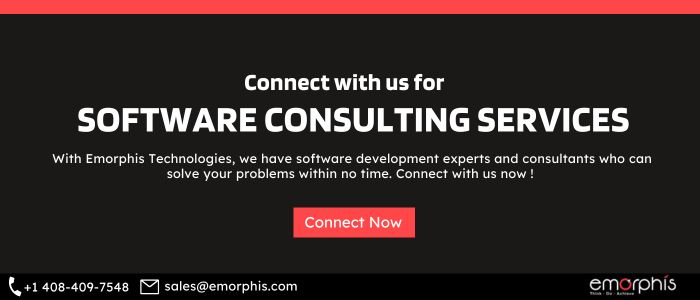
Major Challenges and Solutions in Software Product Engineering
Software product engineering involves a complex and dynamic process, and organizations often encounter various challenges along the way. Addressing these challenges is crucial to ensure the successful development, maintenance, and enhancement of software products. Here are some common challenges and potential solutions in software product engineering:
1. Changing Requirements
Challenge: Requirements can change rapidly due to market dynamics, evolving user needs, or shifting business priorities, leading to scope creep.
Solution: Adopt Agile methodologies, such as Scrum, to embrace change and facilitate iterative development. Regular communication with stakeholders and continuous feedback loops help manage changing requirements effectively.
2. Tight Development Timelines
Challenge: Pressing timelines may result in rushed development, compromising the quality of the software product.
Solution: Implement Agile practices, utilize DevOps for continuous integration and delivery, and prioritize features based on business value. Automated testing can help maintain product quality despite tight schedules.
3. Budget Constraints
Challenge: Limited financial resources may restrict the allocation of funds for extensive development, testing, or ongoing maintenance.
Solution: Prioritize features based on critical business needs, explore open-source solutions, and leverage cloud services for cost-effective scalability. Adopting a phased approach and iterative development can also help manage budget constraints.
4. Technological Complexity
Challenge: Rapid advancements in technology can lead to challenges in selecting the right stack, integrating new technologies, and ensuring compatibility.
Solution: Conduct thorough technology assessments, stay updated on industry trends, and invest in employee training. Modular architectures, microservices, and API-driven development can enhance adaptability to changing technologies.
5. Quality Assurance and Testing
Challenge: Inadequate testing may result in the release of software with bugs and security vulnerabilities.
Solution: Implement comprehensive testing strategies, including automated testing, continuous testing, and security testing. Conduct regular code reviews and collaborate with QA teams to identify and address issues early in the development process.
6. Cross-Team Collaboration
Challenge: Lack of effective collaboration between development, testing, and operations teams can lead to miscommunication and project delays.
Solution: Encourage a culture of open communication and collaboration. Adopt DevOps practices to facilitate cross-team collaboration and streamline the entire software development lifecycle.
7. Scalability and Performance
Challenge: As user bases grow, scalability and performance issues may arise, impacting user experience.
Solution: Design software with scalability in mind, utilize cloud services for flexible infrastructure and conduct performance testing. Regularly monitor system performance and optimize code for efficiency.
8. Data Security and Privacy
Challenge: Ensuring the security and privacy of user data is a constant concern, especially with the rise in cyber threats and stringent data protection regulations.
Solution: Implement robust cybersecurity measures, encrypt sensitive data, conduct regular security audits, and stay compliant with relevant data protection laws.
9. Legacy System Integration
Challenge: Integrating new features or technologies with existing legacy systems can be complex and may result in compatibility issues.
Solution: Plan for gradual system upgrades, use middleware for seamless integration, and implement API-driven architectures to ensure compatibility between legacy and modern systems.
10. User Feedback Incorporation
Challenge: Effectively incorporating user feedback into the development process can be challenging, leading to potential mismatches between user expectations and the delivered product.
Solution: Establish feedback loops through user testing, surveys, and analytics. Leverage Agile methodologies to adapt to changing user needs and preferences, ensuring continuous improvement based on user feedback.
Addressing these challenges requires a combination of strategic planning, agile methodologies, effective communication, and the adoption of technologies and practices that enhance adaptability and quality throughout the software product engineering lifecycle.

Future Outlook of Software Product Engineering
The future outlook of software product engineering is shaped by ongoing technological advancements, evolving market demands, and the need for innovation in the development process. Several trends and considerations provide insight into the potential trajectory of software product engineering in the coming years:
AI and Machine Learning Integration
The integration of AI and machine learning is poised to play an increasingly prominent role in software product engineering. AI-driven algorithms will contribute to smarter, more predictive applications, automating complex tasks, enhancing user experiences, and providing valuable insights for decision-making.
Quantum Computing Impact
As quantum computing continues to advance, it holds the potential to revolutionize software product engineering. Quantum algorithms could significantly accelerate computations, enabling the resolution of complex problems in optimization, cryptography, and simulation that were previously infeasible for classical computers.
Continued Evolution of Agile and DevOps
Agile methodologies and DevOps practices will continue to evolve to meet the demands of rapid development cycles and continuous delivery. Integration of these practices will become even more seamless, allowing teams to collaborate effectively, reduce time-to-market, and maintain a focus on delivering value to end-users.
Edge Computing for Enhanced Performance
The rise of edge computing will impact software product engineering by bringing processing power closer to the source of data. This shift reduces latency, improves real-time processing capabilities, and enhances the performance of applications, particularly those requiring low-latency responses.
Blockchain Applications Beyond Cryptocurrency
Blockchain technology will find expanded applications beyond cryptocurrency. In software product engineering, it will be leveraged for secure and transparent data storage, supply chain traceability, and ensuring the integrity of transactions in various industries.
Enhanced User Experience with Augmented Reality (AR) and Virtual Reality (VR)
AR and VR technologies will continue to transform the user experience in software products. Their integration will extend beyond gaming and entertainment, with applications in training simulations, virtual collaboration spaces, and immersive user interfaces for various software applications.
Shift Towards No-Code/Low-Code Development
The adoption of no-code/low-code development platforms is expected to rise, enabling non-technical users to participate more actively in the software development process. This democratization of development can accelerate the delivery of simple applications and prototypes.
Focus on Sustainability
The software industry is increasingly recognizing the importance of sustainability. Future software product engineering will likely involve considerations for energy efficiency, reduced carbon footprint, and environmentally responsible development practices.
Greater Emphasis on Cybersecurity
With the proliferation of cyber threats, cybersecurity will remain a top priority in software product engineering. Future developments will include advancements in secure coding practices, continuous monitoring, and the integration of AI-driven security solutions to detect and respond to threats in real time.
Collaboration with Cross-Disciplinary Teams
As software products become more integrated with various industries, cross-disciplinary collaboration will become crucial. Software product engineers will work closely with experts in domains such as healthcare, finance, and manufacturing to create solutions that address specific industry challenges.
Rise of Decentralized Applications (DApps)
The adoption of decentralized technologies, such as blockchain and distributed ledger technology, may lead to an increase in the development of decentralized applications (DApps). These applications operate on a peer-to-peer network, offering enhanced security, transparency, and autonomy.
In summary, the future of software product engineering promises continuous innovation and adaptation to emerging technologies. The industry will likely see a shift towards more intelligent, user-centric, and sustainable software solutions, with an increasing focus on collaboration, security, and the efficient delivery of value to end-users. Keeping pace with these trends will be essential for organizations and professionals in the software product engineering space.

Conclusion
In summary, the future of software product engineering is marked by the integration of cutting-edge technologies such as AI, quantum computing, and decentralized applications. Agile methodologies, DevOps practices, and no-code/low-code platforms are driving efficiency and collaboration. The impact of edge computing, AR/VR, and a focus on sustainability and cybersecurity is shaping user experiences and industry standards. Adaptability, cross-disciplinary collaboration, and a commitment to innovation will be essential for software product engineers to navigate this dynamic landscape successfully.
Emorphis Technologies is at the forefront of software product engineering, showcasing a remarkable proficiency in leveraging emerging technologies. With a team of skilled professionals, the company excels in developing innovative software products by harnessing the power of artificial intelligence, machine learning, and blockchain. This expertise positions Emorphis Technologies as a strategic partner for businesses seeking cutting-edge solutions that align with the latest industry trends.
Emorphis Technologies’ commitment to stay ahead in the dynamic software landscape is evident through its adoption of Agile methodologies, ensuring a flexible and iterative approach to development. This agile mindset allows Emorphis Technologies to adapt quickly to changing requirements, collaborate efficiently within development teams, and deliver high-quality products within accelerated timelines. The seamless integration of DevOps practices further enhances collaboration, ensuring continuous integration, delivery, and deployment for reliable and timely software releases.



